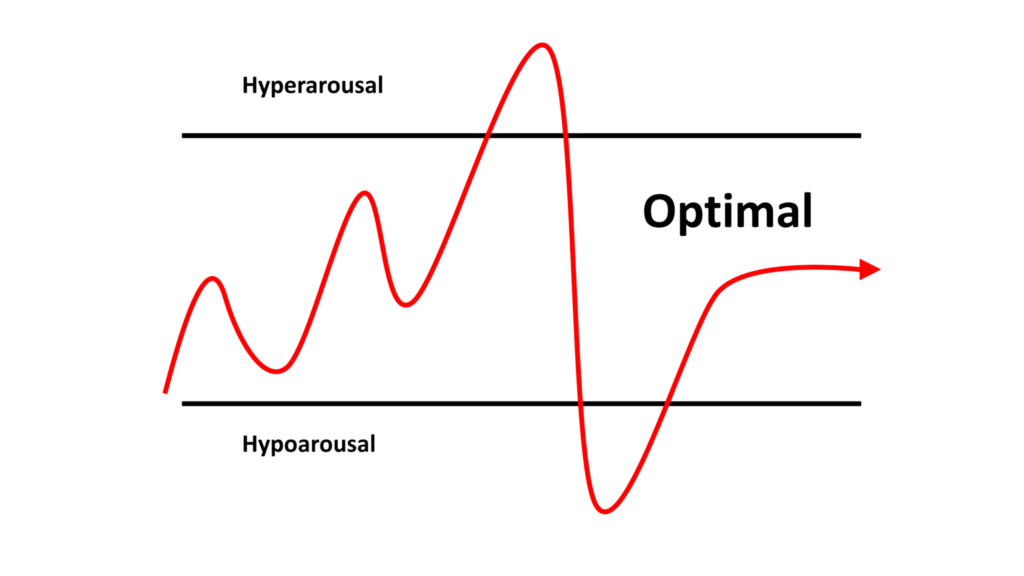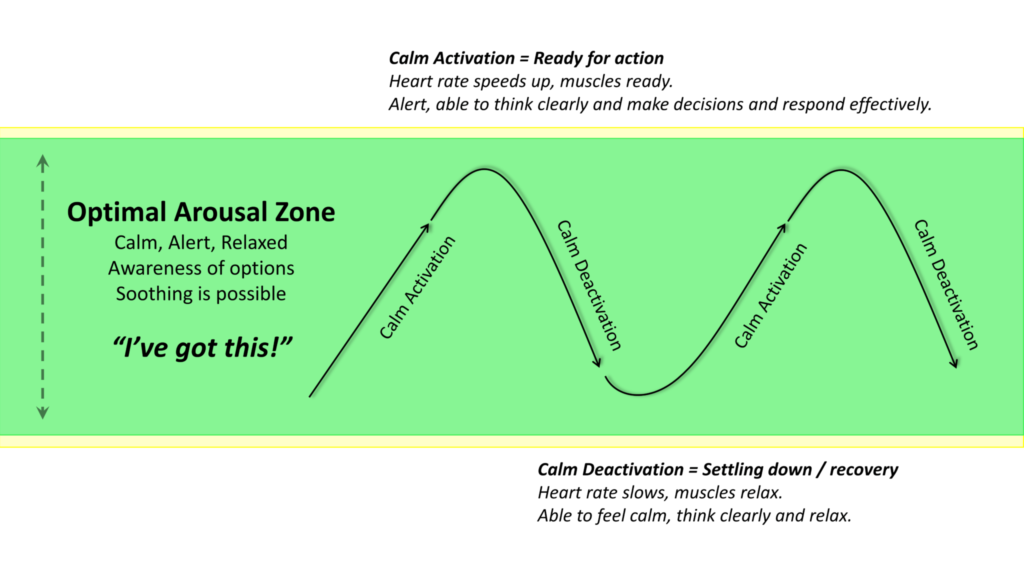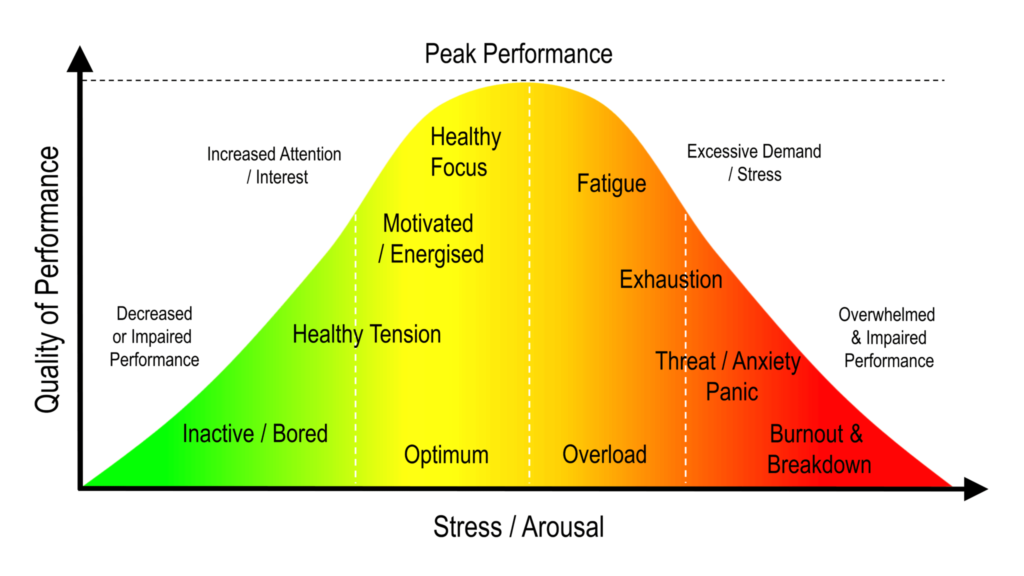The “Window of Tolerance,” developed by Dr. Dan Siegel, a Clinical Professor of Psychiatry, describes the optimal state of arousal or stimulation in which we can function and thrive in everyday life. Staying within this window allows us to learn effectively, play, and relate well to ourselves and others. However, stress and adversity can push us outside this window, leading to hyper-arousal or hypo-arousal. Here are some strategies to cope and expand your Window of Tolerance, enhancing your resilience and emotional well-being.
Recognise and Understand Your Window of Tolerance
The first step in expanding your Window of Tolerance is understanding what it is and recognizing when you’re within or outside of it. The Window of Tolerance is the range in which you can manage emotions, handle stress, and engage in activities without becoming overwhelmed or shutting down. By becoming aware of your emotional and physical states, you can identify when you are approaching the edges of your window.
The Optimal Zone: Balance and Regulation
When we operate within our Window of Tolerance, our nervous system is balanced, allowing for adaptive responses to stress and emotional regulation. This state, referred to as the Optimal Zone, encompasses two primary aspects:
- Calm Activation: We are alert and engaged, ready to respond to challenges without becoming excessively stressed.
- Calm Deactivation: We can relax and recover from stress, maintaining emotional equilibrium.
Just as a thermostat adjusts the temperature to keep it within a comfortable range, staying within our Optimal Zone requires awareness and skills to regulate our arousal levels. This can be achieved through self-soothing actions or engaging in stimulating activities as needed.
Strategies for Managing Hyper-arousal
Hyper-arousal results from the fight or flight response and is characterized by excessive activation or energy. Symptoms include difficulties concentrating, irritability, anger, panic, constant anxiety, and self-destructive behaviour. Here are ways to manage hyper-arousal:
- Soothing Breathing Techniques: Practice deep, slow breathing to calm your nervous system. Techniques like diaphragmatic breathing or the 4-7-8 method can be particularly effective.
- Calming Imagery: Visualize a peaceful place or situation to help reduce stress. Creating a mental “calm place” can provide a quick escape from overwhelming feelings.
- Grounding Exercises: Engage in grounding techniques such as focusing on your five senses to bring yourself back to the present moment. This helps interrupt the cycle of anxiety and panic.
- Mindfulness and Meditation: Regular mindfulness practices can help you stay centred and reduce overall anxiety levels. Apps and guided meditations can be useful tools.
Strategies for Managing Hyper-arousal
Hyper-arousal results from the fight or flight response and is characterized by excessive activation or energy. Symptoms include difficulties concentrating, irritability, anger, panic, constant anxiety, and self-destructive behaviour. Here are ways to manage hyper-arousal:
- Soothing Breathing Techniques: Practice deep, slow breathing to calm your nervous system. Techniques like diaphragmatic breathing or the 4-7-8 method can be particularly effective.
- Calming Imagery: Visualize a peaceful place or situation to help reduce stress. Creating a mental “calm place” can provide a quick escape from overwhelming feelings.
- Grounding Exercises: Engage in grounding techniques such as focusing on your five senses to bring yourself back to the present moment. This helps interrupt the cycle of anxiety and panic.
- Mindfulness and Meditation: Regular mindfulness practices can help you stay centred and reduce overall anxiety levels. Apps and guided meditations can be useful tools.
- Self-Care Strategies:
- Soothing breathing: Deep and slow tummy breathing.
- Mindfulness in nature: Spend time in nature, and engage your senses.
- Writing: Externalize thoughts and feelings through journaling.
- Gentle stretching or Yoga: Yin/Restorative Yoga.
- Vigorous exercise: Shaking, stomping, or any vigorous activity.
- Warm water: Take a warm bath or shower.
- Extreme cold water: Safe ice bath practices.
- Throwing: Throw a yoga ball at a wall or rocks into the water.
- Rhythmic activities: Dancing, rocking on a hammock, or bouncing on a trampoline.
- Rolling: Use a foam roller or yoga ball.
- Music: Listen to soothing music or play an instrument.
- Comforting food: Enjoy hot chocolate or chewy, smooth food.
- Weighted blanket: Relax under a weighted blanket.
Strategies for Managing Hypo-arousal
Hypo-arousal results from the freeze or flop drop response, where there is a sense of shutting down or dissociating. Symptoms include exhaustion, depression, flat affect, numbness, and disconnection. Here are ways to manage hypo-arousal:
- Stimulating Activities: Engage in gentle, stimulating activities that interest you, such as light exercise, creative hobbies, or engaging conversations.
- Grounding Techniques: Similar to managing hyper-arousal, grounding exercises can help you stay connected to the present. Focus on the physical sensations around you to combat feelings of numbness or disconnection.
- Connecting with Others: Reach out to supportive friends or family members. Social interactions can help lift your mood and provide a sense of connection and belonging.
- Mindfulness and Movement: Incorporate mindful movement practices such as yoga or tai chi to gently stimulate your body and mind.
- Self-Care Strategies:
- Sensory Stimulation: Engage your five senses mindfully.
- Movement: Vigorous exercise, balancing, or dancing.
- Body Scan: Focus on different parts of your body to connect with physical sensations.
- Essential Oils: Smell essential oils to stimulate the brain.
- Chewy/crunchy food: Enjoy the sounds and sensations.
- Jumping: Use a trampoline or mini trampoline.
- Art: Finger painting, drawing, or any tactile creative activity.
- Stimulating Music: Listen to or play music.
- Water play: Blow through a straw or immerse in cold water.
- Holding ice: Hold a piece of ice until it melts to return to the present moment.
- Cognitive Load: Increase cognitive engagement with activities like the “5-4-3-2-1” exercise.
- Connecting: Contact a friend for meaningful interaction.
Building Emotional Regulation Skills
Developing emotional regulation skills is crucial for expanding your Window of Tolerance. These skills help you maintain balance and adapt to stressors more effectively:
- Self-Awareness: Regularly check in with your emotional and physical states. Keeping a journal can help track patterns and triggers in your mood and arousal levels.
- Self-Compassion: Practice being kind and understanding toward yourself, especially during challenging times. Self-compassion reduces stress and promotes emotional resilience.
- Mindfulness Practice: Incorporate mindfulness into your daily routine. Even a few minutes of mindful breathing or meditation can significantly affect your ability to stay within your Window of Tolerance.
Tailoring Your Approach
Different strategies work for different people, so it’s important to find what works best for you.
The Yerkes-Dodson Law illustrates that optimal performance occurs with moderate stress levels, highlighting the need for balance. Customise your approach based on your unique needs and experiences:
- Calming Techniques for Hyper-arousal: Use soothing breathing, calming imagery, and grounding exercises.
- Stimulating Techniques for Hypo-arousal: Engage in stimulating activities, grounding exercises, and social interactions.
Factors Influencing Your Window of Tolerance
Remember that various factors influence your Window of Tolerance, including significant childhood experiences, neurobiology, social support, environment, and coping skills. The size of your window can change daily, but the more you practice these strategies, the wider your window will become.
Dissociation: Coping Beyond the Threshold
When stress overwhelms our capacity to cope, dissociation can occur. This disconnection from conscious awareness and sense of self can range from mild (e.g., daydreaming) to extreme (e.g., distinct personality states in response to trauma). Understanding dissociation is vital, especially in trauma therapy, where preparation skills are needed to expand and maintain the Window of Tolerance before addressing traumatic memories.
Conclusion
Expanding your Window of Tolerance is a valuable goal for managing emotional and physiological responses to stress. By developing awareness, emotional regulation skills, and personalized coping strategies, you can enhance your resilience and improve overall well-being. These strategies provide a foundation for navigating life’s challenges with greater ease and confidence, allowing you to thrive in everyday life.
At Achieve and Thrive Behaviour Specialists, we are committed to supporting you in expanding your Window of Tolerance and enhancing your emotional resilience. Whether you’re navigating stress, or trauma, or seeking personal growth, our team is here to help you develop personalized strategies for coping and thriving.
Contact us to start your journey today.




